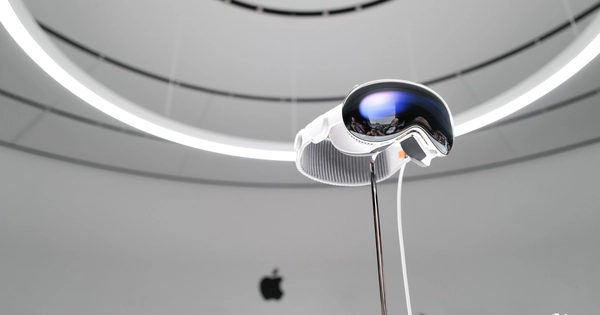Vision Pro’s Declining Appeal: Challenges and Potential Futures. Is the allure of Apple’s Vision Pro dwindling? Mark Gurman’s recent update in his PowerOn newsletter suggests that enthusiasm for Apple’s innovative VR device has notably cooled since its debut. The Vision Pro, initially met with robust crowds eager to test it at its launch, now sees many of its demonstration slots remain unfilled—some without any attendees at all.
Apple Advances AI in iOS 18 with Offline Capabilities
At its launch, the Vision Pro was seen as a revolutionary entry into the VR sector, expected to transform user experiences just as dramatically as earlier Apple products had. However, Gurman notes a shift in interest; what was once a bustling scene of excited users has quieted considerably. The ease of securing an appointment for a Vision Pro demo today contrasts sharply with the initial rush, indicating a decrease in consumer interest.
Apple has responded to this decline by intensifying its marketing efforts, prominently featuring the Vision Pro on its U.S. website—a strategy not typically employed by the company. This move suggests an urgency to rejuvenate market excitement and engagement with the product.
The experience of using the Vision Pro, as detailed by Gurman, mirrors the broader challenges facing VR technology. Initially, Gurman utilized the device multiple times a day, fully immersing in its capabilities. However, his usage has reduced over time, citing the headset’s cumbersome nature and the impracticality of its setup as significant deterrents.
The device’s bulky design and the ritual needed to activate and navigate its interface have made spontaneous usage cumbersome. These barriers often make alternative options, such as laptops or TVs, more appealing for watching videos or engaging in digital interactions.
Another critical issue is the device’s intrusive nature. The Vision Pro isolates the user from their surroundings, which can be awkward and impractical around others. This isolation limits the contexts in which the device can be comfortably used, typically requiring privacy and seclusion.
This introspective isolation is emblematic of broader social and cultural challenges facing VR technologies. While VR offers unique and immersive experiences, its fit into everyday social and work environments remains awkward and invasive.
The comparison to competitors like Meta Quest underscores a common trajectory in the VR industry: initial excitement leading to rapid decline in interest. These devices often end up underused, reflecting a novelty effect rather than sustained utility.
Apple might need to adopt new strategies to counteract these trends. Expanding the device’s availability and adjusting its price could make it accessible to a broader audience, potentially revitalizing its market presence.
Moreover, addressing the inherent social and practical challenges of VR usage is crucial. Apple could lead with innovations that integrate VR more seamlessly into social and professional environments, potentially expanding its appeal.
Despite these efforts, whether the Vision Pro can overcome its hurdles and achieve widespread adoption remains uncertain. The device’s success may depend on Apple’s ability to redefine VR’s role in everyday life, similar to how the iPhone revolutionized mobile communication.
Ultimately, the future of the Vision Pro hinges on whether Apple can transform it from a niche luxury into a mainstream necessity. As the tech community anticipates the upcoming WWDC, all eyes will be on Apple for signs of how it plans to invigorate its VR strategy.
As we look toward the future, the Vision Pro stands at a crossroads. Will it follow the path of other forgotten gadgets, or will Apple find a way to embed it into our daily lives as successfully as the iPhone and iPad? Only time will tell, but one thing is clear: Apple remains at the forefront of technological innovation, continually pushing the boundaries of what’s possible.

